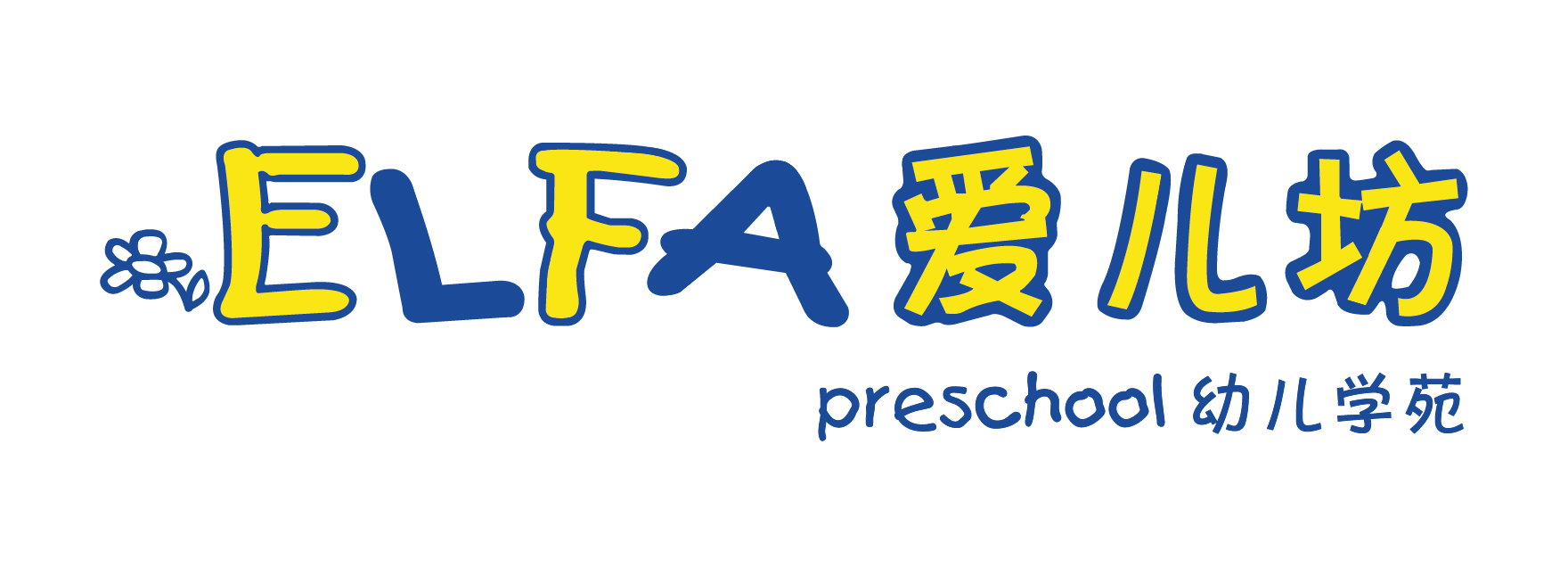Raising children who are both happy and healthy is one of the most rewarding goals a parent or educator can strive for. In today’s fast-paced world, balancing healthy lifestyle habits like good nutrition, regular activity, and emotional wellbeing can sometimes be overwhelming (Mayo Clinic, 2021). Yet, these small, consistent efforts are the building blocks of thriving childhood and the foundation for a brighter future.
The Ministry of Health (MOH) and Ministry of Education (MOE) recently announced initiatives to help children adopt healthier lifestyles through personalised health plans (The Straits Times, 2023). These efforts highlight the importance of creating environments where children can flourish physically, mentally, and socially. At ELFA, we share this commitment by integrating structured programmes that encourage children to make healthy choices in every aspect of their lives.
In this article, we focus on three key areas—physical activity, strong bone development, and wholesome eating. We can help to improve children’s overall well-being and help them recognise their self-worth to boost their positivity and self-confidence for a happier life.
1. Keep Your Child Active
Why Activity Matters
Physical activity is one of the most important contributors to a child’s health and happiness. It supports gross motor skills development—such as running, jumping, climbing and balancing—and enhances fine motor skills, like hand–eye coordination. When children engage in varied movements, they sharpen their spatial awareness, build stamina, and strengthen cardiovascular health (NHS, 2023). According to the World Health Organization (WHO, 2020), children who remain active often have better concentration, an improved mood, and lower anxiety levels.
Types of Activities to Encourage
- Structured Play
Organised sports, dance classes, or gymnastics sessions fall under structured play. Here, children learn new skills under guided supervision, gaining lessons in teamwork, discipline, and perseverance (American Academy of Paediatrics [AAP], 2018). - Creative Routines
Scheduling quick “movement breaks” during the day can let children stretch, dance, or jump before returning to quieter tasks. Five minutes of dancing between homework assignments or a short round of jumping jacks before a meal can do wonders for their concentration in the next 30 minutes. - Outdoor Exploration
Walks, hikes, or nature scavenger hunts keep children active while connecting them with their environment. Not only do these activities help build up their muscle strengths, it also sparks their enquiring minds to discover the environment. It helps them develop observational skills and learn about local plants and wildlife (WHO, 2020).

Outdoor play helps children develop essential social and emotional skills like cooperation, patience, and teamwork
ELFA’s Approach
ELFA adopts a holistic approach to promoting physical engagement through two key programmes that blend active play with curiosity-driven exploration. Our focus is on body awareness, spatial perception, and coordinated movement, complemented by cardio-wellness lessons that teach children how to monitor their heart health and understand the importance of a healthy diet—all to build self-confidence from a young age.
Meanwhile, our optional Holiday Programme takes learning beyond the classroom through immersive outings, where children acquire additional skills such as inline skating and Taekwondo. These experiences emphasise the joy of active play, further enriching their overall well-being.
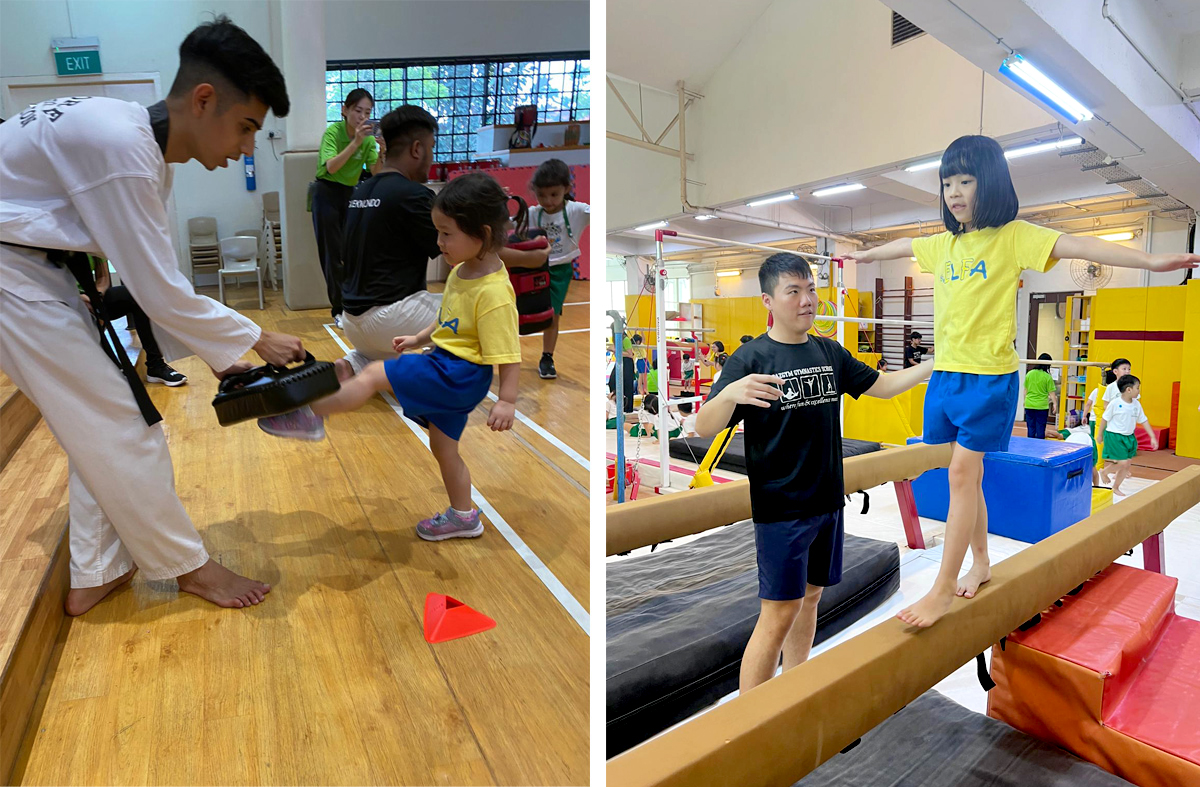
Children from ELFA Preschools practising their Taekwondo kicks (left) and engaging in gymnastics lessons (right) during the June Holiday programme
2. Building Strong Bones: The Core to a Healthy Body
Why Bone Health Matters
A child’s early years are crucial for bone development (AAP, 2018). Strong bones help children remain active without undue fatigue or risk of injury. By laying this groundwork now, you can reduce the likelihood of fractures and even lower the risk of conditions such as osteoporosis in later life.
Weight-Bearing and Impact Activities
Weight-bearing activities are essential for bone strength. Examples include:
- Jumping and Hopping: Games such as hopscotch or jump rope gently stress the bones, prompting them to grow stronger and denser.
- Climbing: Whether it is climbing stairs, a playground ladder, or a child-friendly rock wall, these activities build both bone density and muscle strength.
- Dancing and Sports: Anything involving running, turning, or leaping—such as ballet, football, or basketball—supports robust bone growth and improves overall fitness (WHO, 2020).
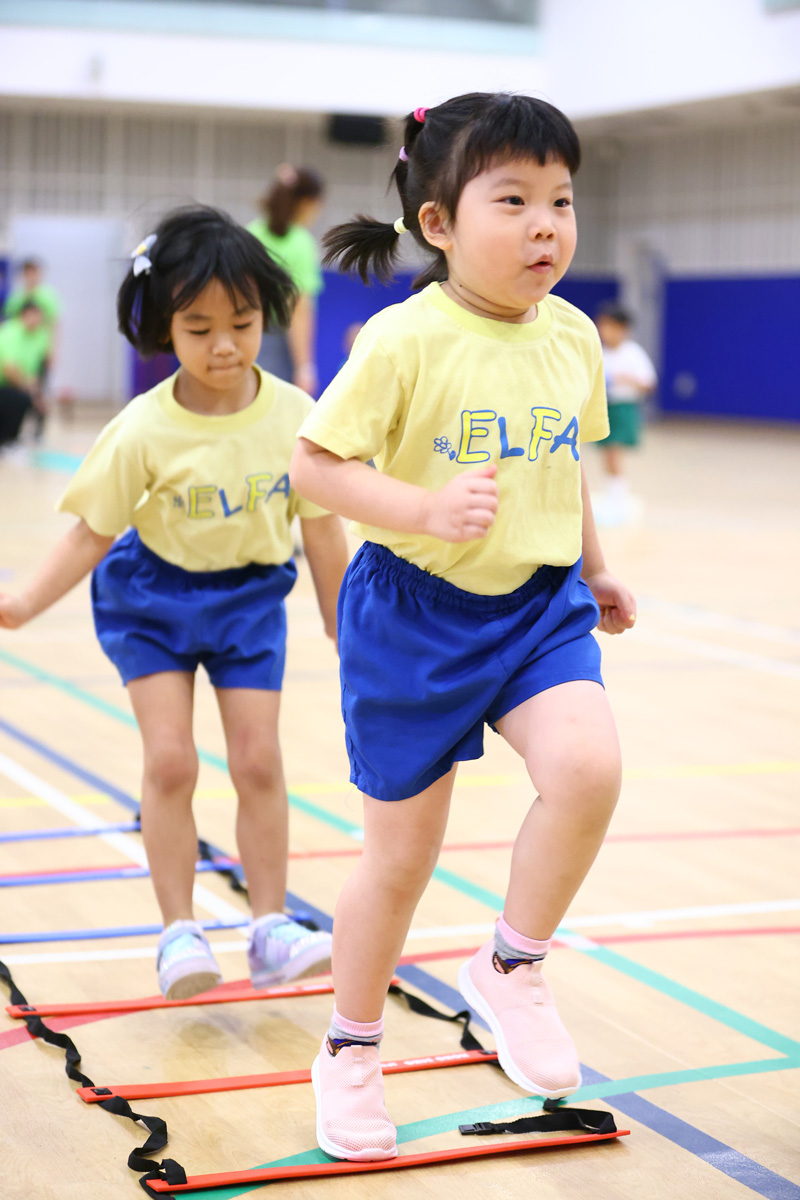
ELFA Preschool children participate in ‘Crawl-Pass-Hop’ at the annual sports event, Sports Fiesta
Nutrients for Strong Bones
Strong bones rely on essential nutrients:
- Calcium: Commonly found in dairy products (milk, cheese, yogurt), as well as in calcium-fortified plant milks and leafy greens such as kale, spinach (Mayo Clinic, 2021).
Vitamin D: Helps the body absorb calcium. Safe, brief sun exposure is a natural source, while fortified cereals, eggs, and fatty fish such as salmon also provide dietary support. Early Childhood Development Agency (ECDA)recommends 30 minutes of outdoor time daily, preferably before 11 AM.
Phosphorus and Magnesium: Commonly found in beans, nuts, seeds, and whole grains, these minerals work alongside calcium to maintain bone strength.
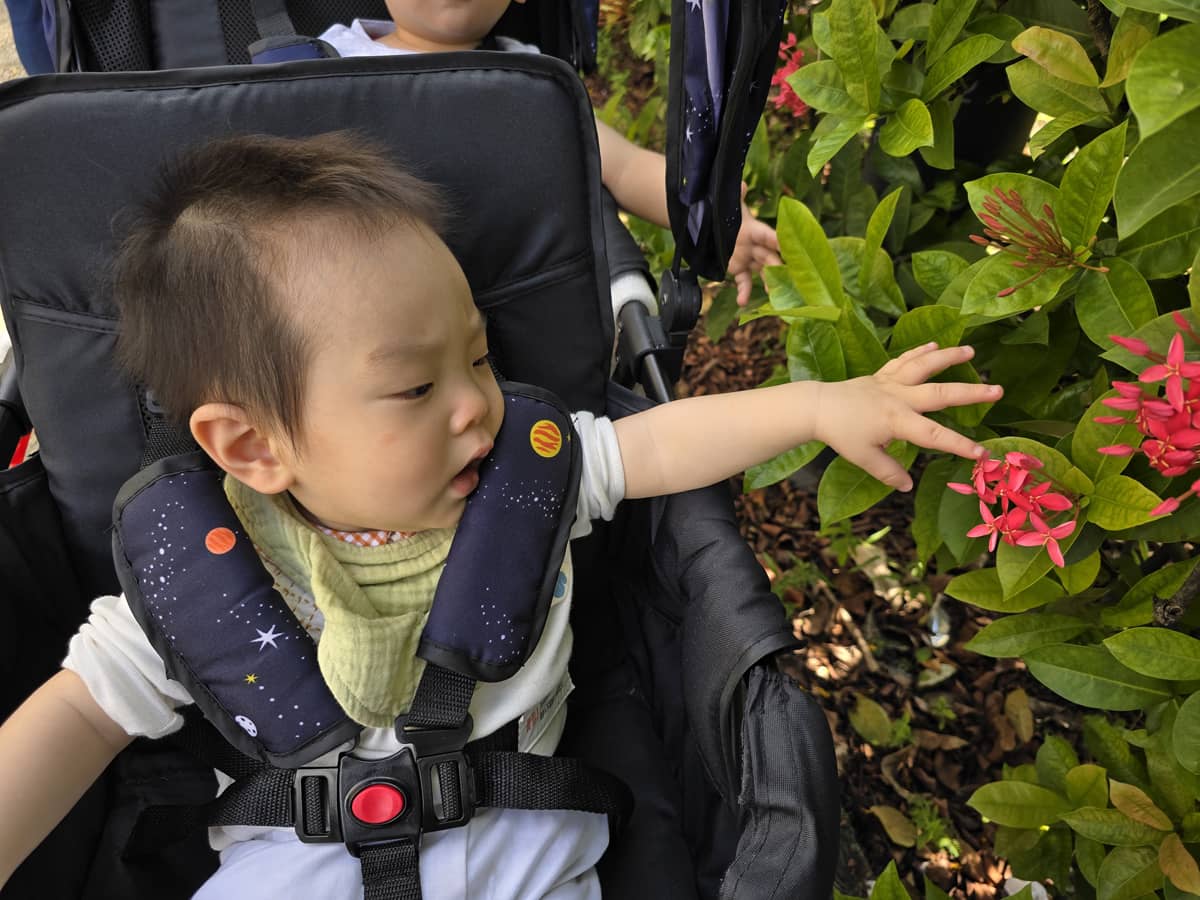
At ELFA, all children from infancy to K2 are given opportunities to participate in outdoor learning activities.
The Role of Sleep
Quality sleep is vital for bone development. During deep sleep, the body repairs and grows at the cellular level. Establishing a cosy, consistent bedtime routine—such as reading a story or playing soft music—ensures children get the sufficient rest they need to support growth. At ELFA, we offer a wide genre of energetic play in ensuring that children’s bones receive the stimulation they need for healthy growth. We also integrate cosy nap times coupled with soothing music and calming temperatures so that children gain adequate rest and support their natural development.
3. Boosting Little Smiles with Nutritious Foods
The Link Between Nutrition and Happiness
The food children eat significantly impact their growth, mood, and energy levels. Well-balanced meals rich in essential nutrients not only fuel their physical development but also support cognitive function and emotional stability. It is hence critical to teach our children in making the right food choices and embrace healthy eating habits. By advocating the right eating habits from an early stage, our children learn to respect their own bodies, contributing to a happier self.
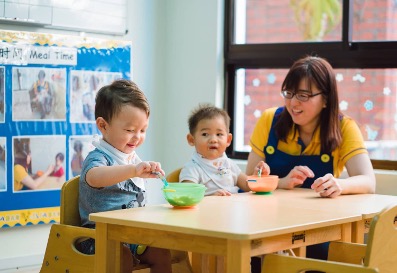
Mealtime should always be the happiest time for growing toddlers!
Creating Balanced Plates
To encourage healthy eating, aim for:
- Colourful Choices: Incorporate a variety of colours such as orange carrots, green peas, and red bell peppers to ensure a spectrum of vitamins and minerals.
- Protein Power: Include lean meats, beans, eggs, and lentils are crucial for muscle growth. For hesitant eaters, blending or dicing these into soups or sauces can be a gentle introduction.
- Whole Grains and Complex Carbohydrates: Brown rice, wholegrain bread, and oats release energy slowly, helping children feel satisfied for longer. These grains also provide fibre, which supports healthy digestion.
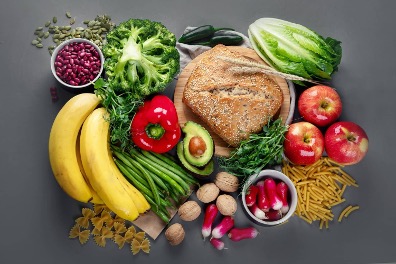
Serve your growing child a good mix of high-fibre vegetable and fruits
Encouraging Healthy Eating Habits
- Involve Children: Allowing them to help wash vegetables or set the table gives them a sense of ownership, making them more curious about tasting new foods.
- Taste Exploration: Pair a familiar favourite (like roasted potatoes) with something new (like baked zucchini slices). Praise children for being willing to taste different foods, even if they do not finish them (AAP, 2018).
- Positive Language: Rather than presenting healthy eating as a chore, emphasise the fun or beneficial aspects (“Carrots help us see like superheroes!”).
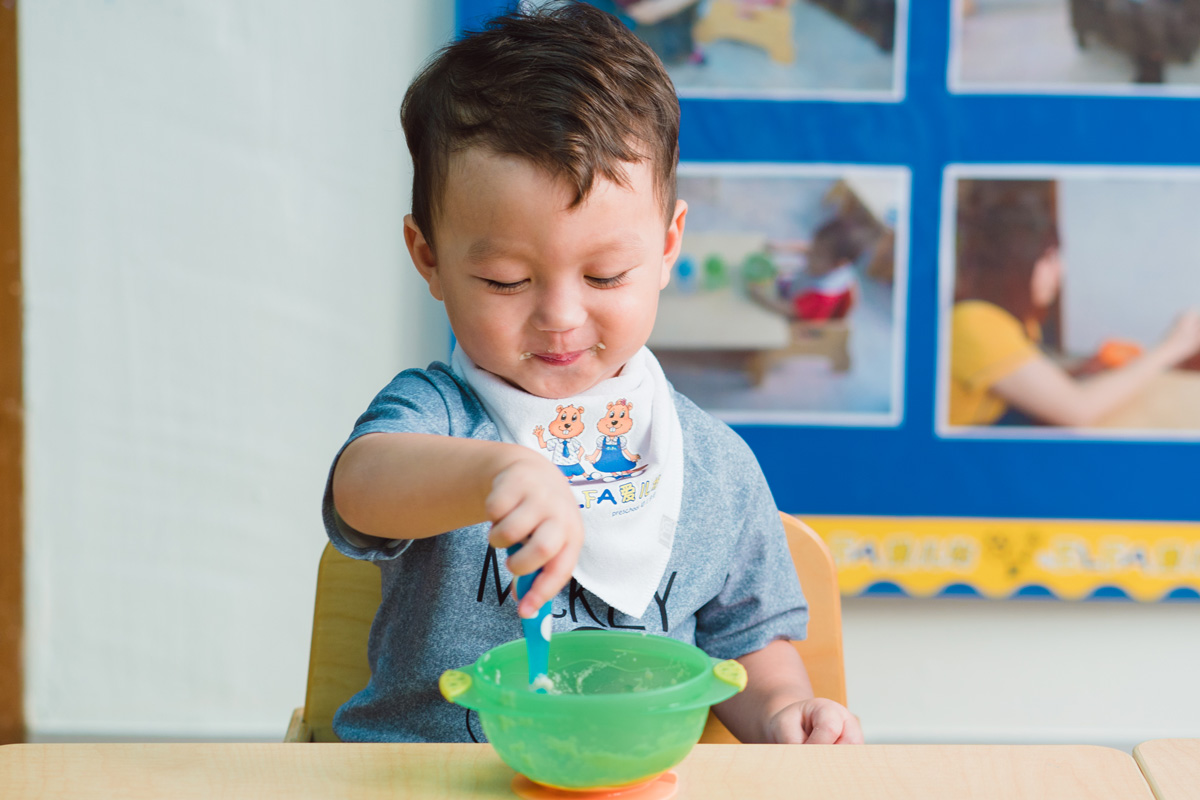
Allowing the child to self-feed will stimulate interest and curiosity during mealtime
Hydration Matters
Proper hydration is vital for digestion, regulating body temperature, and maintaining focus. You can offer fruit-infused water (for example, lemon slices, strawberries, or cucumber) as a refreshing, low-sugar alternative.
ELFA’s Commitment to Nutritious Meals
Recognising the rising prevalence of junk food and processed snacks, the MOH encourages families to adopt healthier food options by integrating whole grains, fresh produce, and balanced meals into their daily diets (The Straits Times, 2023). At ELFA we serve meals made with brown rice and wholegrain bread, ensuring that children receive the nutrient-rich carbohydrates and fibre they need. Beyond that, food menus are carefully designed by an in-house nutritionist in ensuring the right proportion of nutrients is provided to every child. These thoughtfully prepared meals help children establish a positive relationship with food and fuel their energy for play and learning.

A Healthy Life for Healthy Children
Conclusion: A Shared Path to Lifelong Wellbeing
When parents and educators unite to emphasise regular physical activity, strong bone development, and nutritious meals, children gain the foundation they need to flourish. Initiatives by the MOH and MOE, combined with ELFA’s holistic programmes, ensure that children are guided towards adopting healthy habits from young that will serve them throughout their lives.
Simple daily habits—such as quick movement breaks, well-balanced meals, and restful bedtime routines—have lasting impacts. By nurturing their bodies, minds, and hearts, we empower children to grow with confidence, resilience, and joy, ready to embrace life with boundless energy and curiosity.
“One hundred years from now it will not matter what my bank account was, how big my house was or what kind of car I drove, but the world may be a little better, because I was important in the life of a child.”
— C. Margaret Fishback Powers, from A Heart for Children (1995)
These wise words remind us that investing in a child’s wellbeing goes beyond any material success. Together, we can make the world brighter—one health, happy child at a time.
References:
- American Academy of Pediatrics (AAP) (2018). org: Nutrition, Activity, and Growth. At: https://www.healthychildren.org/
- Mayo Clinic (2021). Children’s Health: Nutrition and Fitness. At: https://www.mayoclinic.org/
- The Straits Times (2023). National Scheme to Get Children to Adopt Healthy Habits. At: https://www.straitstimes.com/singapore/national-scheme-to-get-children-to-adopt-healthy-habits-and-thrive-kicks-off-with-personalised-plans
- NHS (2023). Benefits of Physical Activity for Children.
- World Health Organization (WHO) (2020). Guidelines on Physical Activity and Sedentary Behaviour. At: https://www.who.int/publications/i/item/9789240015128
